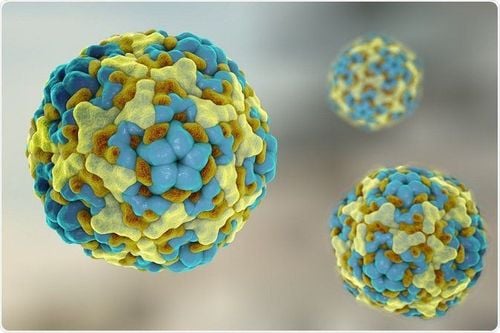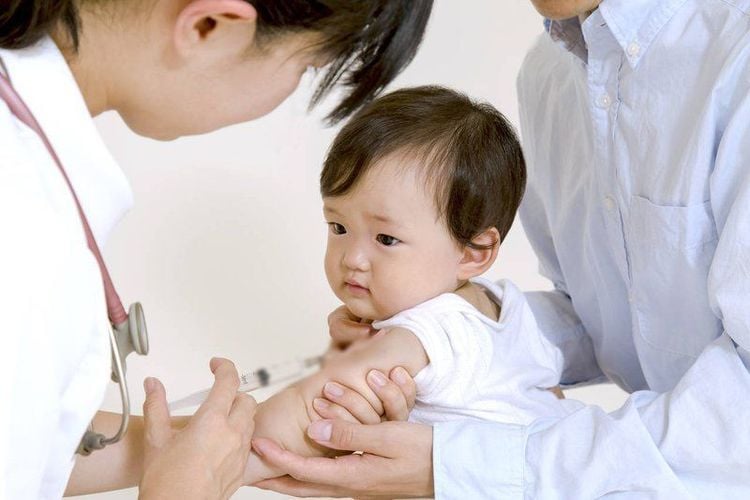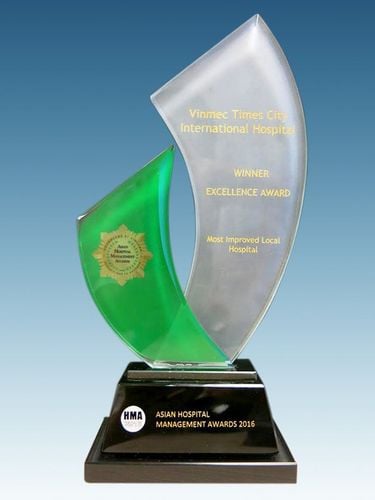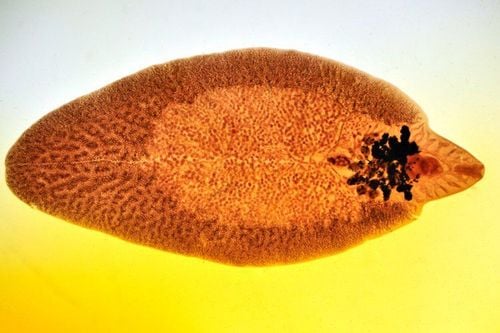This is an automatically translated article.
The article was professionally consulted with Doctor Department of Pediatrics - Neonatology, Vinmec Hai Phong International General Hospital.
Myocarditis, especially acute myocarditis, is a common disease in children. The disease initially manifests with signs such as fever, headache, body aches, paleness...so it is often misdiagnosed with cases of common cold.
1. Myocarditis in children
Myocarditis is inflammation of the myocardium, necrosis or lysis of myocardium caused by infection, toxicity, or diseases of the connective tissues. Myocarditis in children is often accompanied by inflammation of the endocardium or pericarditis.
2. Causes of myocarditis in children
Among the causes of myocarditis, the leading ones are enteroviruses, echoviruses and adenoviruses. In addition, there are measles virus, mumps ... can also cause myocarditis.
When these agents enter the body, they will damage the heart muscle cells, reduce the contractility of the heart muscle, causing cardiovascular collapse. At this time, the heart must dilate and increase activity to ensure the activities of the body. However, due to overwork, the heart is weakened, the heart muscles contract very weakly, which is gradually destroyed, leading to the release of substances and elevated heart enzymes.
Myocarditis can occur at any age, including young children, especially children between the ages of 2 and 10. In children under 24 months, the disease is likely to occur because at this time, the child's body has not yet completed the functioning of the organ systems and the resistance is still weak.
Myocarditis is a dangerous disease, especially acute myocarditis. Clinically, it is possible that the pediatric patient only has transient myocarditis, after being treated and restored, there will be no sequelae. But in contrast, many severe cases, the risk of leaving complications of heart failure or arrhythmia even has a high risk of death.

3. Signs of myocarditis in children
Clinical manifestations of myocarditis in severity or mildness depend on the health status of the child as well as the age of the child.
3.1 In older children, the first clinical signs usually start from the symptoms of the respiratory system such as: chest pain, shortness of breath ... then digestive disorders, then when the disease progresses, it is gradually seen. heart and chest symptoms.
Therefore, at this stage, it is easy for mothers to mistake it for a common cold or flu, self-medicating, but rarely taking their children to the doctor, until the child begins to show signs in the heart area, then take the child to the doctor. lead to delay in treatment.
3.2 In young children, the symptoms are not obvious at first, sometimes it is just that the baby suddenly stops feeding, often cries, has a fever, falls into a lethargic state. Therefore, it is very difficult to diagnose at this time.
On examination, a faint heart sound is a very valuable early symptom in acute myocarditis, initially with a faint first sound. Then fade for the second hour with signs of cyanosis, pale color, tachycardia, low blood pressure, especially the maximum blood pressure, chest pain, palpitations, shortness of breath when exerting, severe cases difficult. breathe even at rest. Cardiopulmonary auscultation can be seen galloping, systolic murmur at the apex of the heart due to left ventricular dilatation causing functional mitral regurgitation.
Signs of heart failure appear when inflammation of the heart muscle is widespread. Children appear more often chest pain, tachycardia or arrhythmia accompanied by shortness of breath during activity even at rest, may edema legs, ankles and feet due to fluid retention.
4. Prevention of myocarditis in children

To be able to prevent and limit the risk of acute myocarditis in children, mothers should note a few things as follows:
Give children a scientific diet to ensure adequate nutrition, especially vitamins and minerals for the healthy development of the child's body, and at the same time increasing the child's resistance. Limit children's contact with adults or other children who have had viral diseases such as influenza, mumps, rubella, etc. Fully immunize children, especially diphtheria and flu shots. , mumps, rubella must not be ignored. In older children who have the ability to perceive behaviors, practice the habit of washing hands before eating and after using the toilet. Give your child enough water to drink every day. When you see a child showing unusual signs such as refusing to breastfeed, fever, body aches, heart palpitations, or shortness of breath...especially cyanosis, pale body, do not arbitrarily give the child medication. must take the child to the nearest medical facility for immediate examination. Acute myocarditis in children, if mild, the disease may have a short course and then go away on its own, clinical manifestations are sometimes unclear and aggressive. But for severe cases, especially when it has progressed to heart failure, the disease will cause many serious complications affecting the health of the child, even causing a high risk of death. Therefore, mothers must regularly pay attention to their children's changes in order to promptly detect abnormal signs and send their children to the doctor early for timely diagnosis and treatment.
Vinmec International General Hospital is a leading prestigious medical facility in the field of treatment of cardiovascular diseases, including myocarditis, with a team of specialized and experienced medical doctors. with modern equipment system, supporting the treatment to achieve the highest efficiency.
Please dial HOTLINE for more information or register for an appointment HERE. Download MyVinmec app to make appointments faster and to manage your bookings easily.













